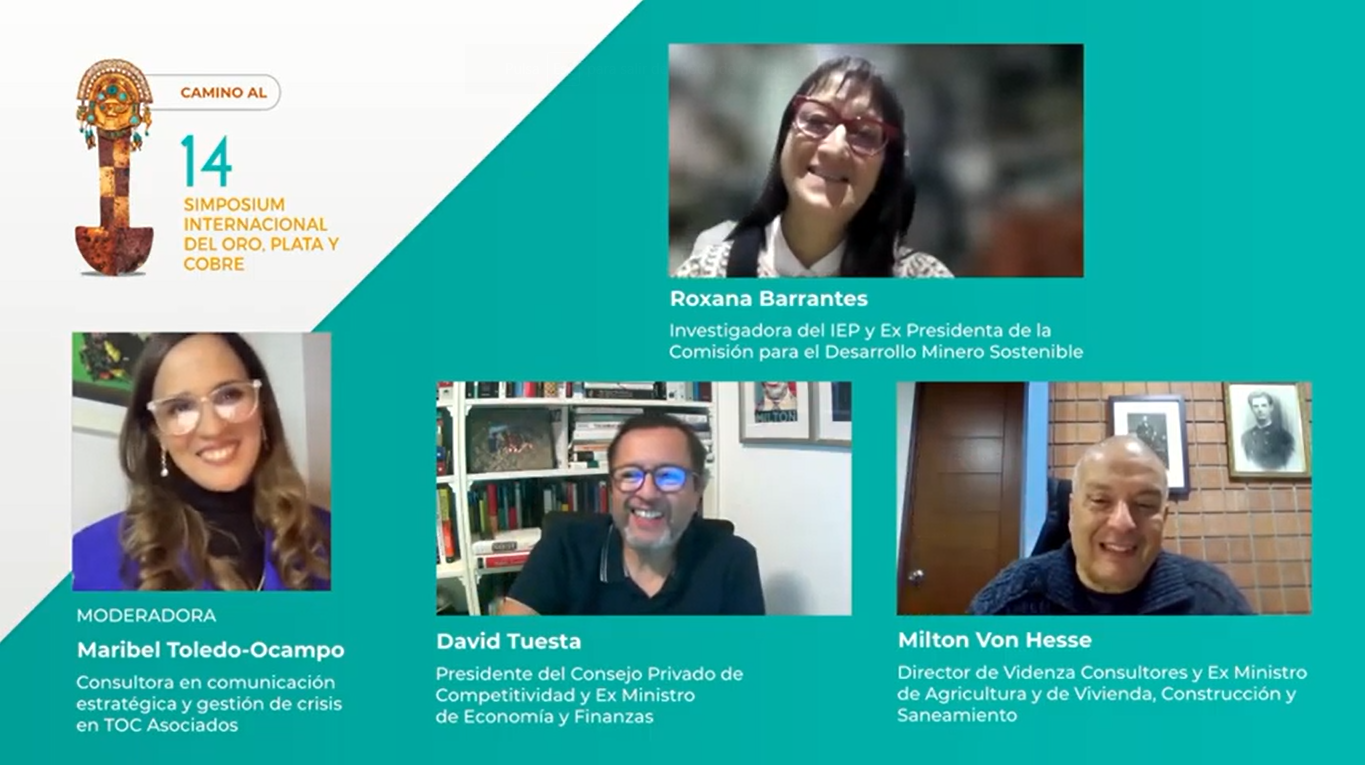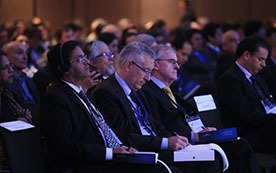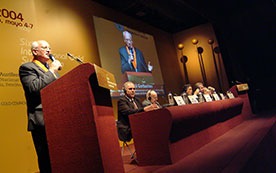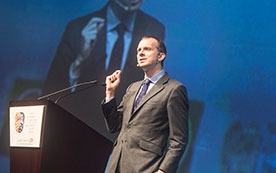
V Meeting “The Canon Challenge: Proposals to optimize the use of resources generated by mining”.
Reform of the mining canon is urgently needed in order to optimize its use to benefit more Peruvians
“There is an urgent need to close gaps and bring well-being to people using the important resources provided by mining taxes”. This was the opening remark of José Augusto Palma, president of the International Organizing Committee of the Gold, Silver and Copper Symposium, at the V Meeting on the Road to the Symposium “The Canon Challenge: Proposals to optimize the use of the resources generated by mining”.
Some S/. 40 billion of the resources generated by mining in the last 10 years have been transferred to the regions as mining canon and royalties, and only 60% of these funds have been used, said Palma. He added that “the challenge is to ensure those funds are invested in a timely, proper and efficient manner”.
“After more than twenty years of mining canon, it is clear that it has not met the objective it was created for, namely that the resources transferred to the regions should be used to develop basic infrastructure and boost local economies,” he underlined.
Along these lines, he expressed that now, when mining has recovered its pre-pandemic production volumes and there is a favorable price situation that will allow the mining sector to contribute historic sums to the country’s economy, it is essential to make an efficient and transparent use of the mining canon so that it benefits all Peruvians.
Precisely, the V Meeting on the Road to the Symposium served to establish a dialogue among specialists on specific measures that can improve the use of these resources.
A national authority that invests unused funds
“Creating a National Authority similar to Reconstruction with Changes, which uses the unused funds from the mining canon and is responsible for the investment of these resources to invest them in each of the regions,” proposed David Tuesta, president of the Private Council for Competitiveness and former Minister of Economy and Finance.
Tuesta said that “a central authority would speed up the implementation of projects and strengthen the decentralization process”.
Scheme of Special Public Investment Projects, prioritizing the closing of gaps.
Milton Von Hesse, director of Videnza Consultores and former Minister of Agriculture and Minister of Housing, Construction and Sanitation, suggested resorting to Special Public Investment Projects (PEIP). His proposal is to establish incentives for sub-national governments to enter into a scheme whereby they would allocate 70% of the annual canon resources under the PEIP scheme, based on objectives to close the gaps and therefore linked to a group of projects “The PEIPs allow having an independent execution unit that centralizes expenditure in view of the institutional weakness of the subnational governments, as well as hiring qualified professionals to implement investments using modern contractual models, such as NEC, PMO and technical assistance,” remarked Von Hesse.
Investing in research and innovation, as well as in human capital
Roxana Barrantes, researcher at the Instituto de Estudios Peruanos (IEP) and past president of the Sustainable Mining Development Commission, suggested that canon resources should also be used to promote the professionalization of human resources. “One of the proposals of the Sustainable Mining Development Commission is to profesionalize public servants in regional and local governments,” she stated.
Barrantes analyzed canon resources allocated to public universities. “The funds allocated to public universities between 2008 and 2020 amounted to more than S/. 6 billion, of which little more than a third has been spent,” she pointed out.
Accordingly, she proposed centralizing the resources allocated to the universities to distribute them every two years via project competitions. A reference entity in science and technology such as Concytec -he added- could act as the governing body for these processes, including international juries for each process.
“The projects entering the competition will be the result of partnerships between universities in the regions benefiting from canon, with universities in regions that do not benefit from canon, but that rank high in terms of scientific production,” he said.
Need for leadership
Von Hesse reflected on the country’s pressing need to build public institutions at all levels of government in order to secure a virtuous path in the long term.
In turn, Tuesta concurred stating that “the great underlying problem is the public servant’s capabilities. We do not have a precise plan on how to strengthen the human capital in the districts, the municipalities, and the regions”.
Furthermore, Barrantes pointed out that any reform in the use of resources coming from the exploitation of natural resources must include political leadership in order to build consensus so that we may aspire to sustainable development.
Moderator
- Maribel Toledo-Ocampo, Strategic Communication and Crisis Management consultant at TOC Asociados
Panelists
- David Tuesta, Chairman of the Private Competitiveness Council and former Minister of Economy and Finance
- Milton Von Hesse, Director, Videnza Consultores and former Minister of Agriculture and former Minister of Housing, Construction and Sanitation.
- Roxana Barrantes, IEP Researcher and Former Chair of the Commission for Sustainable Mining Development
Relive Meeting IV here


